Dry lakes, snow-free mountains, shrinking forests and coral-less seas are all growing threats to the tourism industry as the earth warms.
Nestled at the foot of the Pyrenees, Lake Montbel in southwestern France is renowned for its turquoise waters and thriving aquatic life. After a dry winter last year, the lake was only 25% full by March, compared to the usual 60% in previous years.
The 570-hectare Montbel Lake, located roughly halfway between Toulouse and Perpignan, was originally used for irrigation but has since attracted thousands of visitors each year for camping, hiking and tourism. Claude Carriere, a rowing coach at a club on the lake, said he felt “heartbroken” by the drought.
“It’s sad to see the lake like this. It looks more like a muddy desert than anything,” Carriere told Reuters in March, as his boats ran aground.
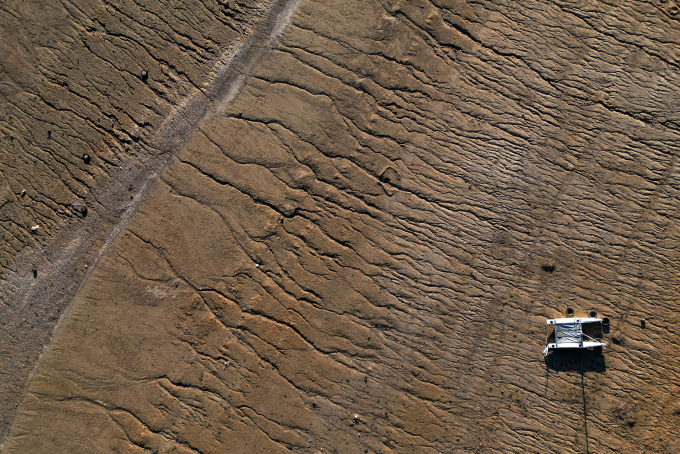
A boat ran aground on Lake Montbel on March 13. Photo: Reuters
Contributing nearly 6% to GDP and creating jobs for nearly 290 million people, the world's travel and tourism industry is facing numerous challenges from extreme temperatures, according to a recent report by HSBC.
The hot weather is affecting people’s travel plans. Last month, the European Travel Commission (ETC) reported that this contributed to a drop in travel intentions among people in the region. In addition, the popularity of Mediterranean destinations has dropped by 10% compared to 2022.
Experts warn that rising temperatures could lead to erratic snowfall and a shrinking snowpack, shortening the ski and snowboard seasons. Several ski resorts in the Alps have already closed in December 2022 due to insufficient snowfall.
More than 2,200 ski resorts in Europe are at risk from climate change, according to new results published by the French National Institute for Research on Agriculture, Food and the Environment (INRAE) and Météo-France. With a temperature increase of 1.5°C, 32% of them will face a “very high risk” of not having enough snow. This figure rises to 98% with a 4°C rise.
However, beach tourism is likely to be the most affected, according to HSBC. Beaches are popular tourist destinations, accounting for nearly 50% of global tourist arrivals. The sector is the backbone of some of the world’s least developed economies, including Small Island Developing States (SIDS), which are also among the most vulnerable to climate change.
Many popular tourist destinations such as the Maldives are at risk of being submerged by rising sea levels. According to NASA, global sea levels have risen 98.5 mm since 1993. The average rate of increase is accelerating, tripling from 1.3 mm per year between 1901 and 1971 to 3.7 mm per year between 2006 and 2018.
Even on a low-CO2 emissions pathway, the world is likely to lose 53% of its sandy beaches on average, which would translate into a 30% drop in hotel rooms and 38% drop in tourism receipts by 2100. Potential risks include coastal erosion, flooding of tourism infrastructure, and impacts on resorts and hotels, tour operators and water sports.
Marine heatwaves and ocean acidification are other major challenges. They wreak havoc on marine life and affect landscape features like coral reefs. The recent marine heatwave that occurred in June along the Queensland coast in Australia raised concerns for the Great Barrier Reef.
Climate change also threatens ecotourism and agriculture by affecting biodiversity and farming. For example, some regions may become less suitable for wine production, with potentially negative impacts on wine tourism, according to the European Commission.
Meanwhile, drought can lead to a higher risk of wildfires. Between 1979 and 2013, fire-prone areas globally doubled due to dry seasons. The increased frequency and extent of wildfires can have a negative impact on tourism in national forests. In 2018, an estimated $20 million in tourism revenue was lost in just one month due to wildfires in California, according to research conducted by Visit California.
The heat is also keeping tourists away, hurting revenue. This year’s heatwave, which reached 45°C across southern Europe, including Greece, Spain and Sicily, is taking a toll on tourist destinations. The Acropolis, for example, was closed and tourists on the Italian island of Sardinia were forced to stay indoors during the heatwave.
In Bologna, Italy, in July, German Health Minister Karl Lauterbach sparked a backlash from officials when he commented on the country's heatwave. "If things continue like this, holiday destinations will have no long-term future. Climate change is devastating southern Europe. An era is coming to an end," he said frankly.
Harald Zeiss, a sustainable tourism expert at Harz University of Applied Sciences in Wernigerode, Germany, predicts that Europe will become hotter and drier, and that extreme weather events will become more frequent in the future. In addition to the consequences for people such as floods and fires, this will threaten the livelihoods of those who rely on tourism for income and employment.
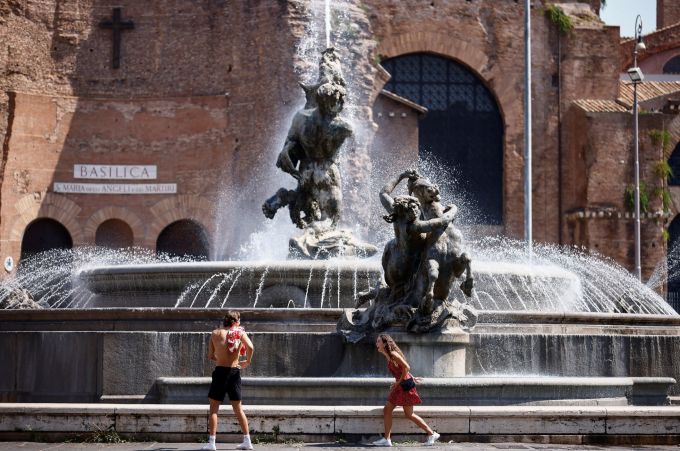
Tourists at Rome's Fontana delle Naiadi, during a heatwave in August. Photo: Reuters
Smaller, less prosperous economies may struggle to cope with increased demand for cooling as tourists seek to escape the heat. Increased demand for air conditioning is also likely to drive up energy consumption.
There have been a number of ideas to deal with the damage caused by warming. One popular solution is to increase the amount of artificial environments. The INRAE study says that the lack of snow for skiing is being supplemented by artificial snow, but it is not optimal.
The institute predicts that ski resorts will increase their demand for electricity and water to produce snow. For example, during the months of December through February, water demand is expected to be 1.2 to 3.5 times higher than the volume used during the period 1961-1990.
In marine tourism, HSBC says artificial reefs are increasingly being used in Antigua and Grenada, while in Vanuatu, tourism businesses have joined forces to establish marine reserves to address climate-related risks.
Many tourism companies have announced carbon neutrality targets by 2050. However, such efforts by companies to mitigate the impact of global warming will have little overall impact. More importantly, tourism will need to adapt to climate change, according to the Economist .
In the short term, they need to closely manage increasingly scarce water resources and have early warning systems for extreme weather events, according to Thomas Ellerbeck, chairman of the German tourism group TUI.
Torsten Kirstges, a tourism expert at the Jade University of Applied Sciences in Germany, believes that more hotels will install solar-powered air conditioners, water coolers and the like. Tourists can adapt by going outside in the morning and evening to avoid the midday heat.
HSBC assesses that as the impacts of climate change continue to increase, adaptation measures will become increasingly important in protecting vulnerable areas. However, it is important to recognise that long-term sustainability depends on a broad-based approach that combines adaptation strategies with global efforts to significantly reduce greenhouse gas emissions.
Phien An ( summary )
Source link


![[Photo] Prime Minister Pham Minh Chinh chairs the Government's special meeting on law-making in April](https://vstatic.vietnam.vn/vietnam/resource/IMAGE/2025/4/13/8b2071d47adc4c22ac3a9534d12ddc17)

![[Photo] National Assembly Chairman Tran Thanh Man attends the ceremony to celebrate the 1015th anniversary of King Ly Thai To's coronation](https://vstatic.vietnam.vn/vietnam/resource/IMAGE/2025/4/13/6d642c7b8ab34ccc8c769a9ebc02346b)
![[Photo] National Assembly Chairman Tran Thanh Man attends the Policy Forum on Science, Technology, Innovation and Digital Transformation](https://vstatic.vietnam.vn/vietnam/resource/IMAGE/2025/4/13/c0aec4d2b3ee45adb4c2a769796be1fd)










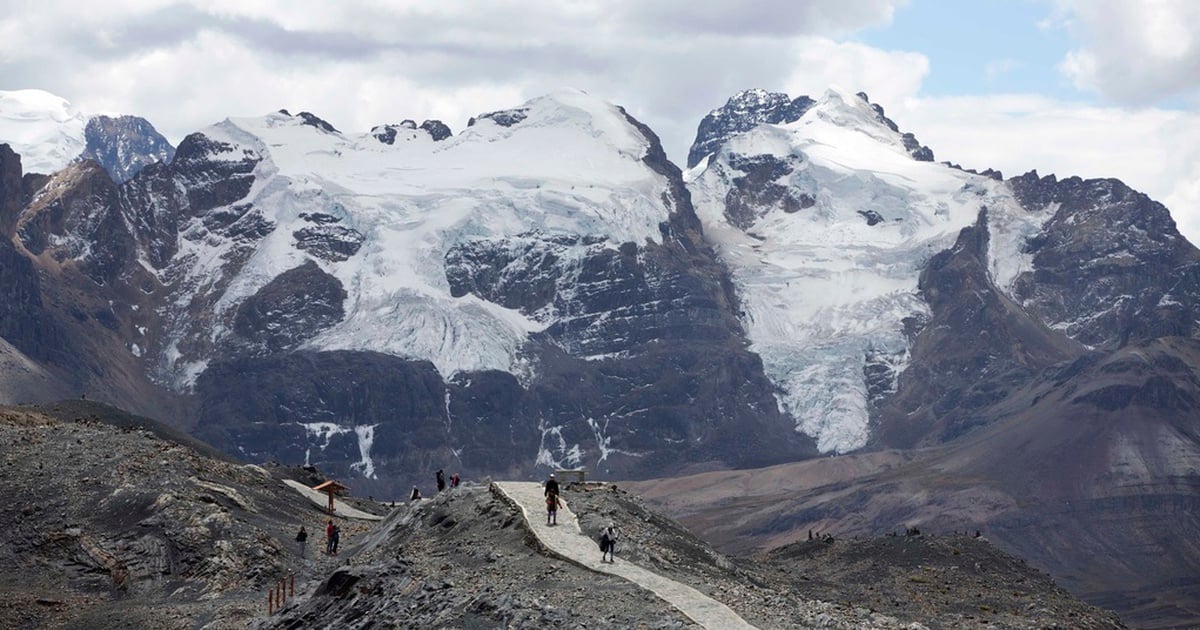


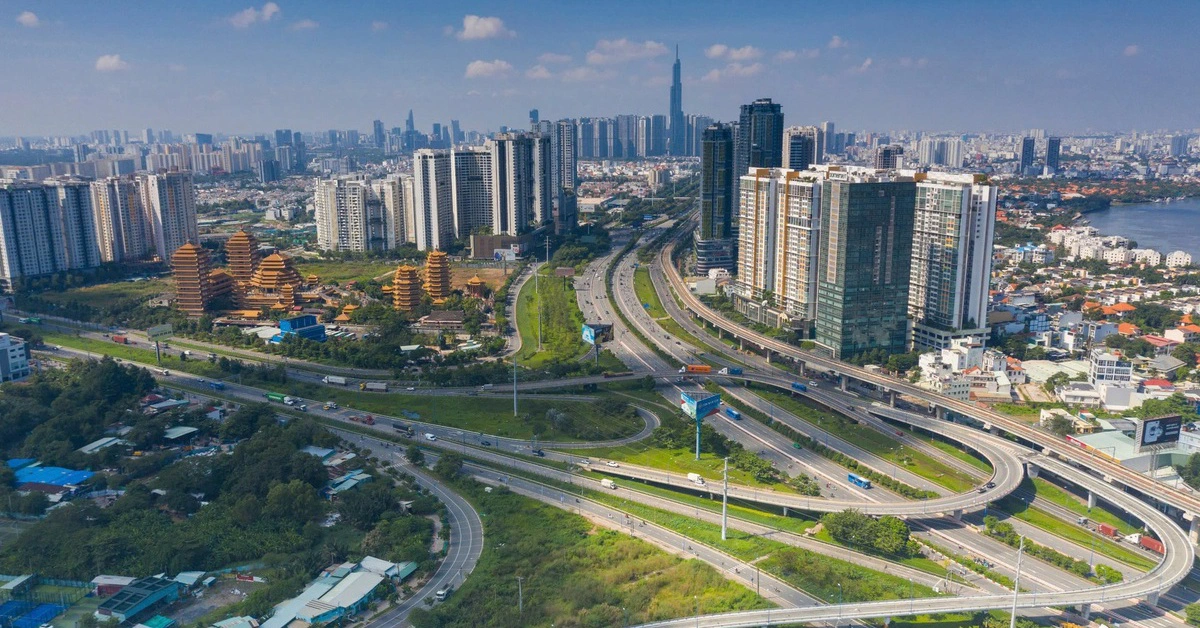












































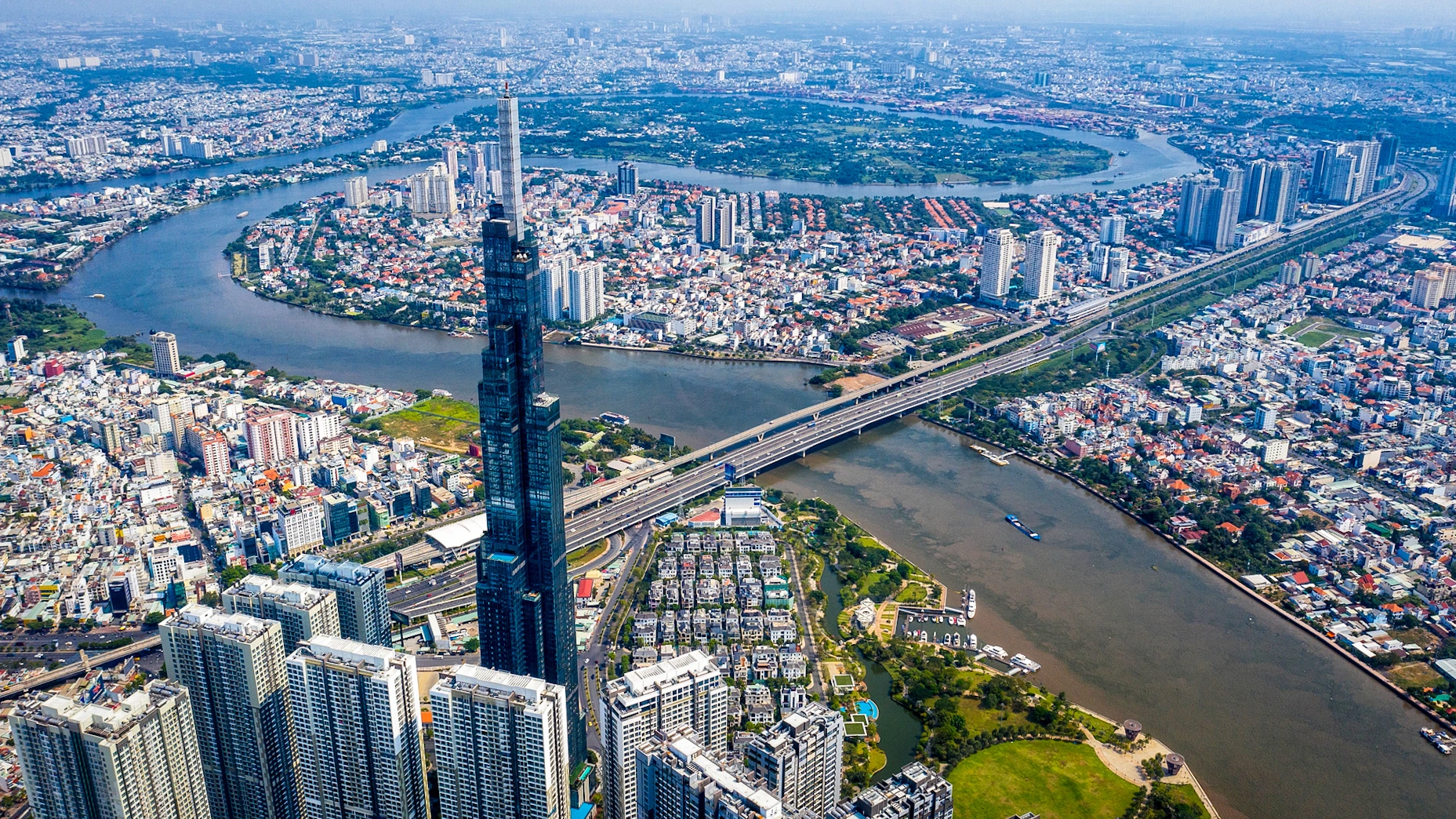
















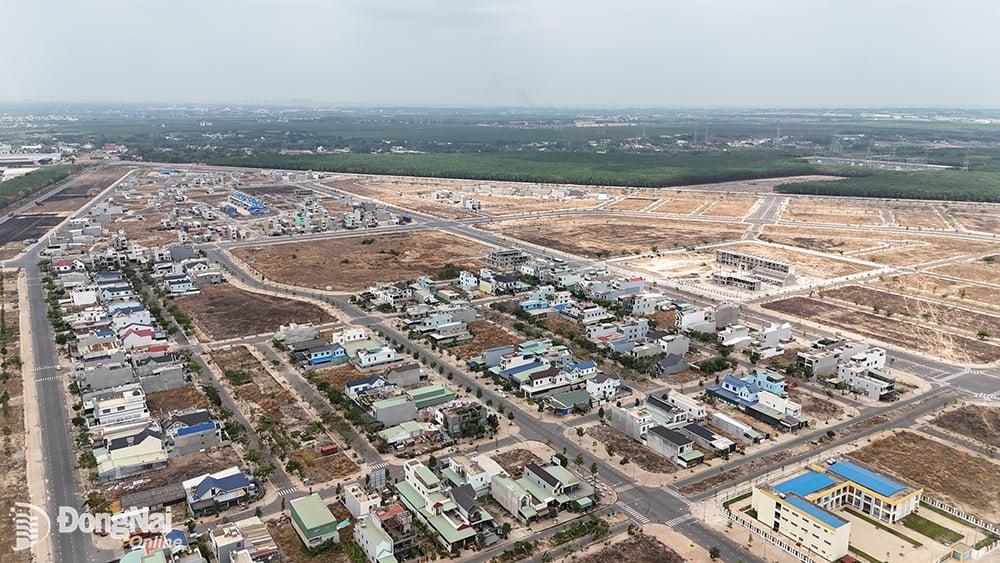














Comment (0)